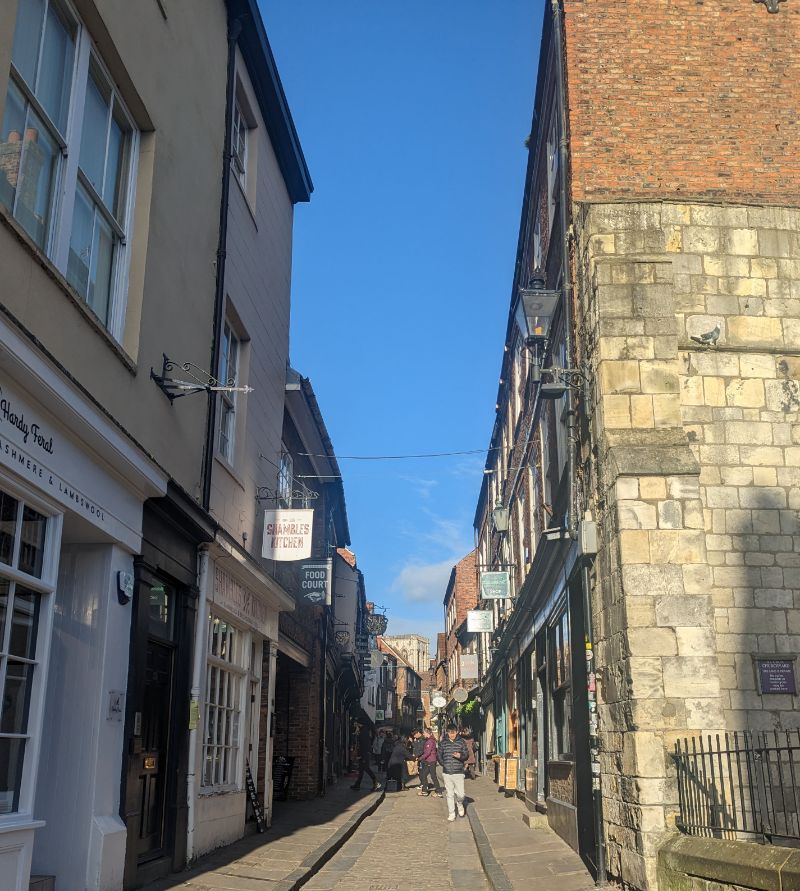There’s so much to love about York and its intricate web of architectural delights, but no street stands out more than The Shambles. The quirky cobbled stretch feels like it belongs in another world and is a rare gem with few comparisons across the UK.
Also known for the movie’s inspiration for Diagon Alley in the Harry Potter films, but there are so many other reasons why the setting holds such magical appeal. Indeed, its blend of nostalgia and modern elements is a big hit among today’s visitors to York.
A Medieval Street Frozen in Time
The architectural origins of the Shambles can be traced back to at least the 14th Century, when many of the timber-framed buildings on the street were constructed. It existed as a market alley before those times, though, and was even documented in the Domesday Book of 1086. Over time, more buildings were added to it, with construction continuing into the 17th Century.
Back in the early days, the street was primarily home to butchers and other traders. That’s why a lot of the shops have wide windows with low shelves, as the meat and other wares will have been displayed in this way. It’s easy to imagine how the narrowness of the alley had its advantages. It meant that meat could be shaded from the sun, and that merchants could easily pass goods between shops.
Nowadays, the shops have changed, but the ancient vibe is still there. Many aspects of the original buildings are still intact, and it feels like everything has been preserved from those simpler times. Indeed, strolling down the Shambles feels like stepping back in time, where you can get a taste of what life was like in the early days of our great city.
How the Shambles Blends History and Modernism
The great thing about the Shambles is that it retains its historic character but has also adapted to modern times. The businesses in the area have all changed over the years, with most of the butchers’ shops replaced by gift shops, cafes, and chocolatiers. There’s also no trading or use of old money for purchases – most places accept modern payments such as internet banking and credit cards.
Another thing that adds to the appeal of the Shambles is its connection to folklore. There are various ghostly legends associated with the quirky alley, including the Butcher’s Boy and the Phantom Monks. York has a history of witch trials too, with some rumours suggesting that curses and charms were once sold from the shops of the Shambles. Today’s shops in the area play into this trope, and leverage the association with huge witch-themed franchises like Harry Potter.
People clearly appreciate a strong connection to folklore in modern culture, as there have been various other instances of today’s entertainment titles being inspired by ancient beliefs. For instance, this is also seen in another area famous for its folklore, Ireland. When people play Rainbow Riches or other Irish-themed games, they’ll often see leprechauns or other mythological characters on the reels, showing how ancient stories and beliefs continue to appear in popular culture.
The Shambles stands out for its distinctiveness and medieval charm, but it’s not the only place in Britain where you can enjoy a similar experience. There are a few other places that are steeped in history as well, and these spots attract a lot of tourists too. London’s Shad Thames and Edinburgh’s Royal Mile are two settings that combine history and modernism as well. However, it could be argued that The Shambles is the best of all.





